Categories
Subjects
Authors
Artists
Venues
Locations
Calendar
Filter
Done
June 18, 2019 – Feature
Basel Roundup
Ingo Niermann
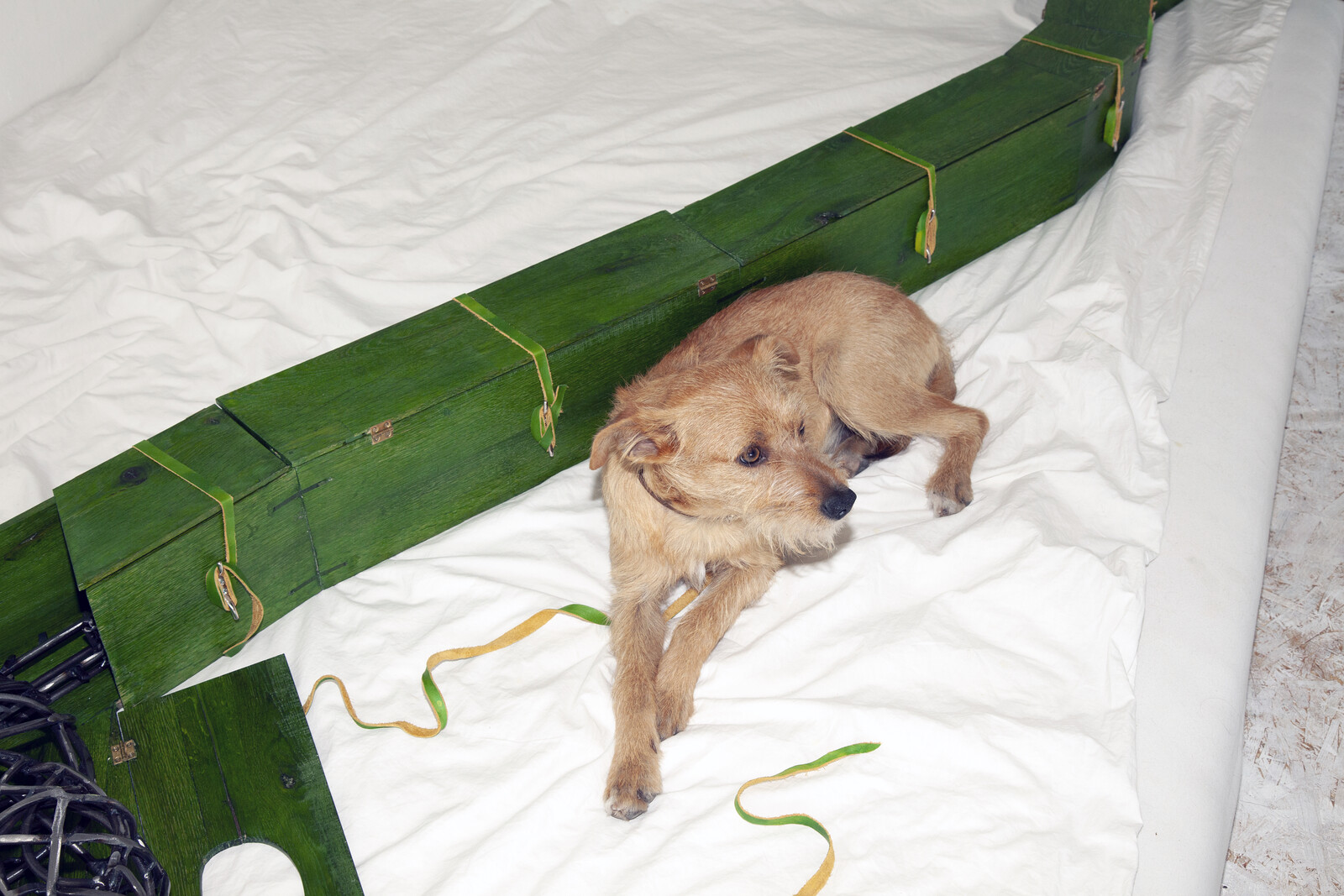
Next year, Art Basel turns 50, and animals are still not allowed. There’s not even a “Pets Lounge,” as there is for kids, even though the fair’s premises are big enough to host a whole circus. Art Basel was founded in 1970, a year before Swiss women gained suffrage. Women were allowed in the fair from the very beginning, but animals will probably have to achieve parliamentary representation before the fair will welcome them. While male collectors of visual art have long been fine with consulting their wives and mistresses, they tend to ignore the taste of their pets. Probably not because they give women’s taste on visual art more importance but because it allows them to bond in placid, post-sexual ways. Sounds boring? That’s what non-humans must think about visual art.
Entertainment needs surprise and trust needs solidity. Visual art tries to combine both: to make a joke that works forever. All arts are polluted by this uncanny ambition, but only visual art confronts us as a permanent physical manifestation. In that sense, it shares similar traits with nationalism. Both intend to eternally occupy Earth’s limited space. Nationalism has caused far more casualties and suffering, because artworks can’t fight …
June 17, 2016 – Review
Art Basel and Liste
Jennifer Piejko
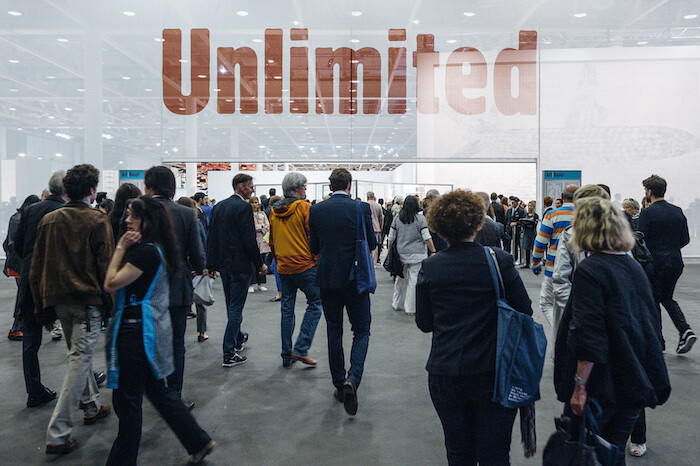
When word got out that Hervé Falciani, a dapper systems engineer at HSBC’s hushed private bank in Geneva, had lifted the identities and details of 130,000 account holders in 2008, the Swiss government was put in the unfortunate position of having to ask its neighbors to extradite this thief or Robin Hood, depending on one’s perspective. These were the same countries whose own citizens had evaded paying taxes on the cash (often wrapped into bricks, sometimes in faraway, foreign currencies) by storing it with HSBC’s Swiss branches. France sheltered the whistleblower and his “Lagarde list,” even sharing the embezzled data with other state governments to help them further their own pursuits of missing tax income, often from its wealthiest citizens.
The centuries-old Swiss banking tradition of total discretion, even at its highest stakes, was finally broken. Falciani was not only a highly skilled technician, he was also an astute witness of both formal and informal office protocol. This was vital, since there was often no official documentation to refer to, or dispute: the majority of the private bank’s clients opted out of receiving monthly bank statements, a process detailed in a recent New Yorker profile that reads like a Hollywood script. …
June 18, 2015 – Review
Art Basel
Ingo Niermann
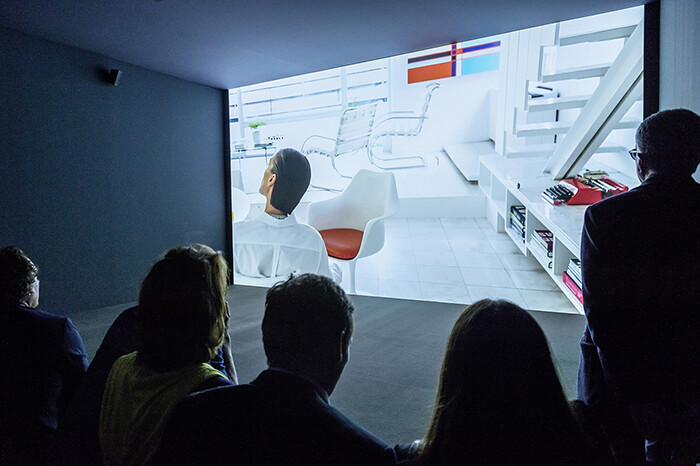
During Art Basel’s preview days most visitors appear to be elderly heterosexual couples. More so than having children, collecting art bears the promise of keeping wealthy couples together. Children grow up and leave the house, but the collection stays and can grow forever. Like people, collections cannot be divided without killing them—still, that’s what a divorce asks you to do.
From a cynical perspective, husbands only collect art to give their wives the illusion that they still share some substantial interests with them, and wives only collect art to give their husbands the illusion that they have lost all libido beyond the little sex and eroticism they still experience together.
While the female half of this collector couple rather tries to resemble an artwork—colorful and ageless—the male part rather imitates the appearance of money with monochrome (preferably dark blue) suits. Of course there are exceptions to the rule, in particular when both spouses try to resemble artworks, or when both spouses try to resemble money.
Collecting art is the best that bourgeois society has to offer to reassure that sex isn’t everything a man and woman could share. Food makes you fat, drugs make you stupid, sports make you attractive again and subsequently …
June 17, 2015 – Review
Art Basel
Stefan Kobel
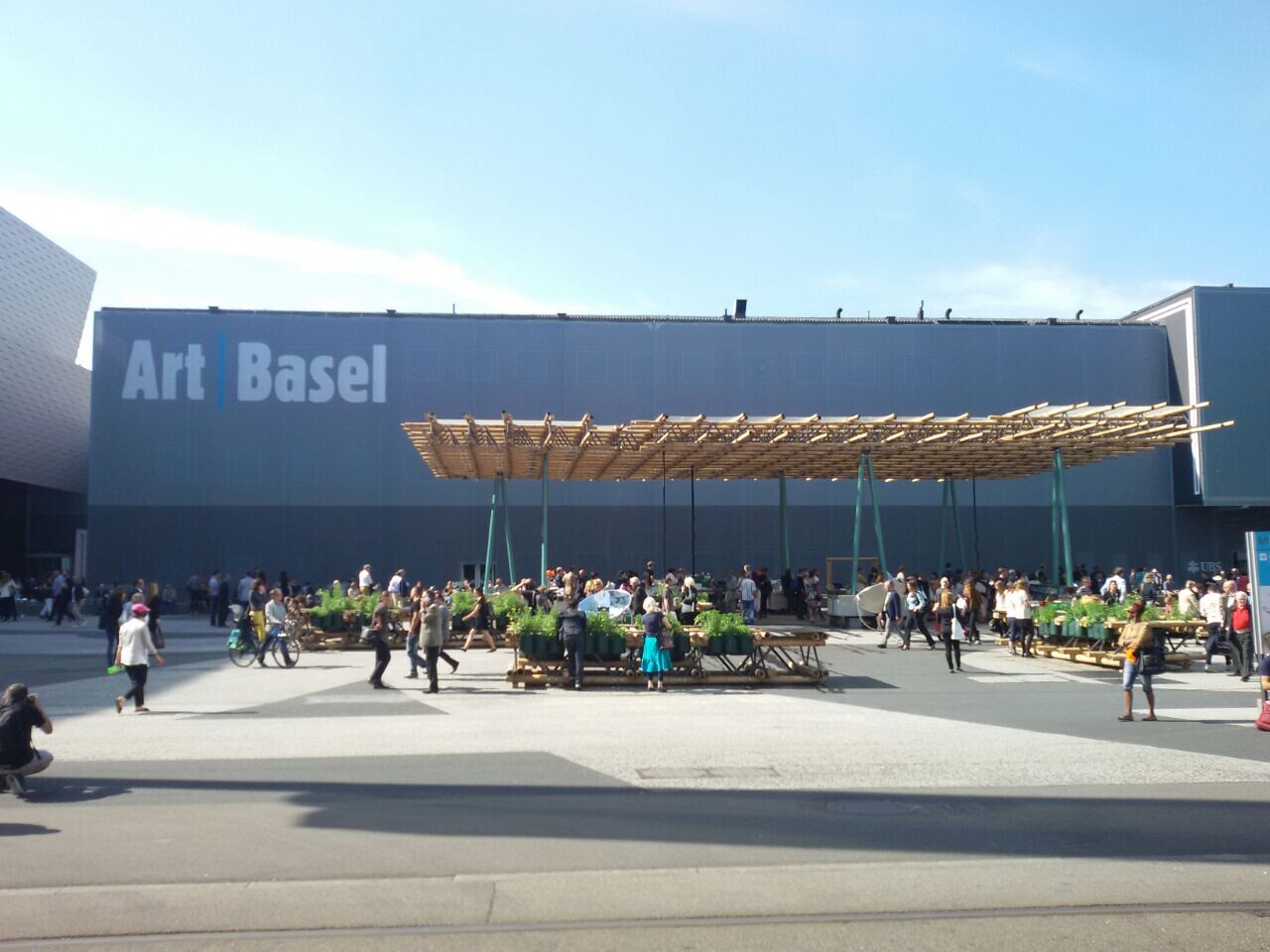
There is a first time for everything! Speaking at Art Basel’s media reception, director Marc Spiegler remarked that “the line between finance and art sometimes seems hard to discern.” Pressed, he admitted that he had never drawn this connection in public before, specifying that “art can be used as a financial asset but a very risky one: there is a high carrying cost involved with owning art due to issues such as storage, insurance, and conservation. It can turn illiquid overnight. Meaning, there are artists whose work has suddenly become impossible to sell at the original price. While there are many people who have invested in art successfully, they are either very knowledgeable themselves or they have very good advisors.” Jürg Zeltner, the President of UBS Wealth Management, had no doubt that art had become an asset.
In the past, everybody at the fair avoided giving even the slightest impression that art might resemble a commodity. Art Basel was all about putting together the best art, by the best artists, represented by the best galleries, and placing it in the best private and public collections. It got a bit monotonous over the years.
Suddenly Art Basel acknowledges the obvious: art is widely …
June 19, 2014 – Review
Art Basel
Laura McLean-Ferris
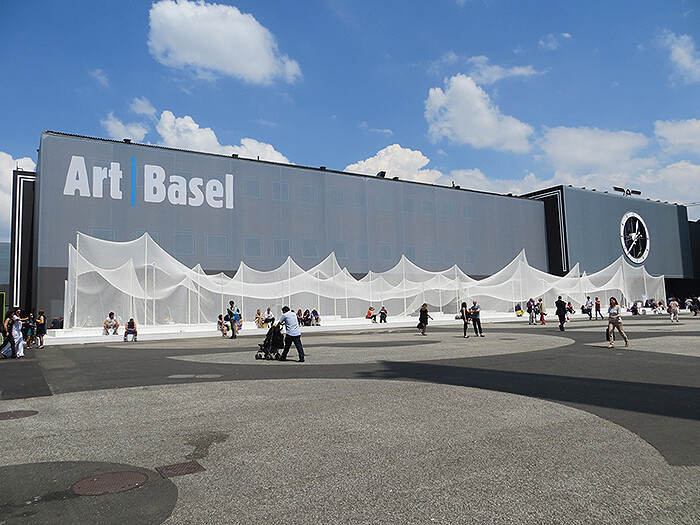
“Real experiments that really fail have to take place in a festival, rather than in an exhibition, because this way you don’t have to take responsibility for them two or three weeks later when they are still going on,” said Klaus Biesenbach at the opening of “14 Rooms,” an exhibition of “living sculptures” that he developed with Hans Ulrich Obrist in 2011 (as “11 Rooms”), which has since arrived at this year’s Art Basel, taking shelter under its branded umbrella. Art fairs truly are the modern festival, a theatre of things and money—but the majority of the things on stage at art fairs do aspire to a state of permanence.
“14 Rooms” takes place in Basel’s oldest trade fair hall, one transformed by Swiss architectural heroes Herzog & de Meuron into a wide corridor space with 14 small, white cubes leading off it, each behind closed doors with wooden handles. Beyond them one finds groups of people performing instructional works, like Allora & Calzadilla’s Revolving Door (2011), in which a line of dancers rotates around a central axis, blocking the visitor’s path, and stamping with various shades of aggression, or Roman Ondák’s Swap (2011)—a person at a table barters with the …
June 17, 2012 – Feature
Art Basel roundup
Laura McLean-Ferris
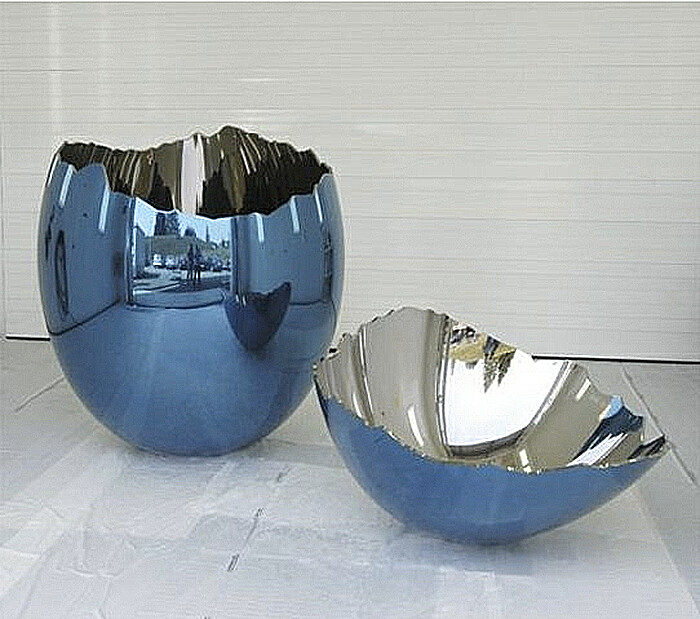
Jeff Koons’s giant blue egg sculpture—that outlandishly chatoyant and seductive object—looks as though it could have landed from another planet or another time. Its cracked top serves as a reminder of the way that Koons created a fundamental fracture within art history with his compelling work, and I was reminded of the artist’s monumental impact as I visited his exhibition at the Fondation Beyeler coinciding with the Art Basel fair, partly because it informed nearly everything I saw subsequently. The very first work in the show is the utterly eerie The New Jeff Koons (1980), a lightbox displaying an image of the artist as a young boy posing with crayons and a coloring book like the perfect child, his expression every bit the airy adult Jeff we have come to know: clear-eyed, polite and unnervingly serene, with his “how may I help you” smile. This image serves as an introduction to the artist’s brilliant Hoover sculptures and shampoo polishers in Plexiglas cubes, which revel in the purity of their box-fresh newness and aspirational product names—Celebrity and so forth, and assisted by Koons’s presentation and uncanny doublings. These, now more than thirty years old, are nothing short of visionary. They seem …
June 14, 2012 – Review
Art | 43 | Basel
Colin Chinnery
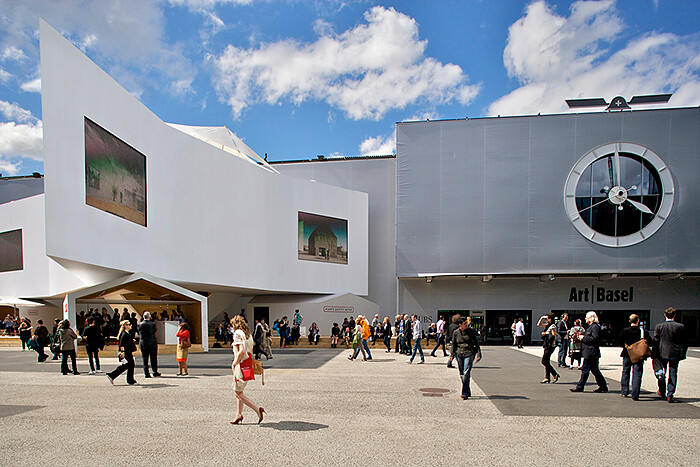
Upon entering Art Basel straight off the train from Kassel, I cannot but help recall the last time Documenta coincided with Art Basel. Back in 2007 the art market, animated by the roaring finance sector, had almost superhero-like qualities, with special powers like selling work before it even existed, and adding zeros to the end of prices. Projects in Art Unlimited then were positively bombastic, like the Christoph Büchel piece Unplugged (Simply Botiful) 2006/07 that could have filled a medium-sized museum. This sensory assault was contrasted by the curatorially austere Documenta XII and Skulptur Projekte Münster that opened after Basel in quick succession. Five years on, the art world is quite a different place. Art cannot escape its relative context, and the context of the market is possibly the most relative of all. The financial anguish of the 2008 crash and the palpable threat of a new recession across Europe has forced the market to think deep and hard about the meaning of longevity. Judging from this year’s Art Basel, longevity means… thinking deep and hard; about what artists have to say, about what works speak most eloquently, and about putting on rigorous shows.
I have to confess this was not …
June 19, 2011 – Feature
Art Basel roundup
Vivian Sky Rehberg
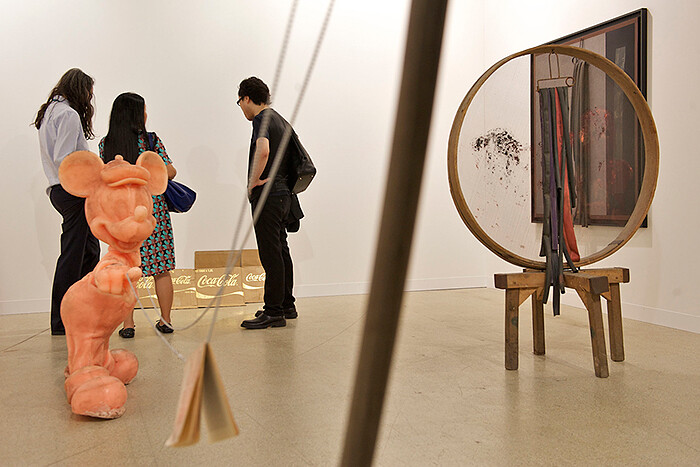
One hears a lot of grumbling about Art Basel. Or maybe it’s just the leftist company I keep. Still, I was surprised to meet more than a few people who had travelled all the way to Basel for reasons peripherally related to the fair but who had refused to step foot in it, according to the misguided “principle” that blinding oneself to the commerce of art is proof of genuine anti-capitalist credentials. Whatever happened to “know thine enemy”? And is the fair really the enemy? Well, historical materialists like me don’t believe in fairy tales and—guess what?—ignoring the art market does not make it go away. My choreographed wander through the behemoth Hall 2 was exhausting, terribly instructive and, in some cases, more aesthetically gratifying than many of the exhibitions I’ve recently seen in non-profit institutions.
Worth the trip alone: Isabella Bortolozzi’s stand, especially Carol Rama’s Movimento e Immobilita’ di Birnam (1977) with its limp bouquet of flaccid black rubber bicycle tire tubes, visually spare yet enticing. In an entirely different register, at Air de Paris, I didn’t know how to quit Dorothy Iannone’s Brokeback Mountain (2010), a brightly painted freestanding object, like a miniature altar, featuring portraits of the characters …
June 17, 2011 – Review
Art Basel
Quinn Latimer

How does one write about an art fair? Dear reader, I am being sincere. If one is not an art market journalist gleefully scribbling down the cost of a collector or celebrity’s (or celebrity collector’s) pre-preview purchase of huge German neon painting, my question is less rhetorical than the subtext of missives sent off to editors after their anxious writers have made the rounds. For a fair like Art Basel—the high, giddy priestess of art fairs—to say the work hung in the white booths is good is redundant. Of course it’s good. It’s insane. So. Where do we go now? Let’s talk about some works, yes, and I’ll even break it down by section.
Art Statements
It’s the curated section devoted to solo presentations of young, promising artists. Perusing it can help identify specific trends—or not. It is a small selection, after all. Still, I noted a turn away from the spare, chic formalism of past years: there were less white plinths and folded c-prints strewn across booth floors, more vivid color and essayistic video and weird, joyful pomp. If there was one booth that caught my eye and seemed an apt metaphor for the fair’s crush of art, it was Petrit …
June 28, 2010 – Review
Art Parcours at Art Basel 41
Colin Chinnery

After seeing what felt like thousands of artworks in hundreds of booths at the fairs, the feeling of walking around Basel’s old town in search of the nine individual art projects of Jens Hoffmann’s Art Parcours was a welcome hiatus from fair fatigue. But what made Parcours a coherent project was the difference in mentalities and attitudes between the various works, and the rhythm of mood that was created from one work to the next. Especially important was the live factor, feeling the presence of the artist. Instead of attempting to create a common denominator between the works, Hoffmann worked with artists who gave different interpretations of the processes of observation, participation, narrative, and the theatrical.
Ryan Gander’s Loose Associations, was the perfect starting point. Gander’s work took the form of an open lecture that weaved different personal anecdotes and observations the artist made over the years. Loose Associations has become a well-known work since it was first performed in 2002, but few people have had the chance to experience this event. The relaxed delivery by the artist, the idiosyncratic sense of curiosity that made Gander collect his anecdotes, and the way the various subjects blend into each other makes this …
June 25, 2010 – Review
Art Basel 41
April Lamm

The Finest Worksong 16 June 2010
Last weekend during the Berlin Biennale I found myself wedged up against a rock star. (Rock star? That’s a far cry from what Michael Stipe means. His lyrics gave solace to a whole generation of purblind pubescents in the late 80s.) He said hello, shyly, and I asked him, bluntly, about an album cover clutched under his arm. We began to talk (why couldn’t I drum up a lyric like “Buy the sky and tell the sky”?) and the last words I could murmur, before being interrupted by the penetrating cell phone were, “Trust your own eyes.”
“Trust my own eyes” was the advice I would follow for myself while harrying through the halls of Art Basel. I decided to begin at random by seeking out a gallery where I know/love their artists but they don’t know me: Air de Paris (read: half-objective territory, impossible to be corrupted by the charm of words or personal relationships). First thing I saw was Bibliothèque du Paradise (2009) by Philippe Parreno, a work I had seen, or at least a similar one, in Paris, at the FIAC last October. It’s an armful of paperbacks covered in Pantone pastel colors. …
Load more